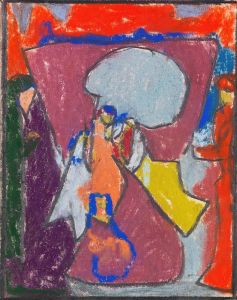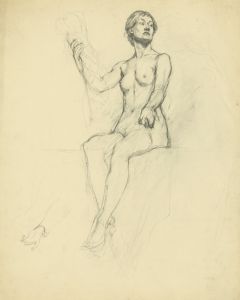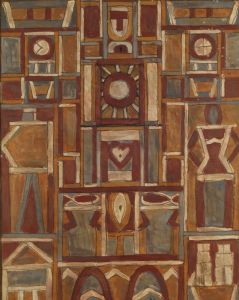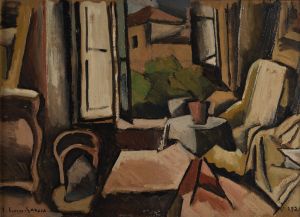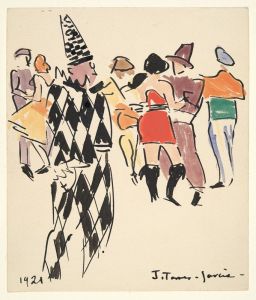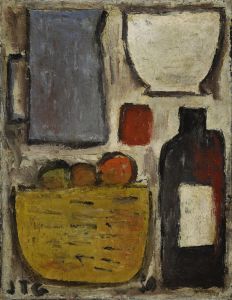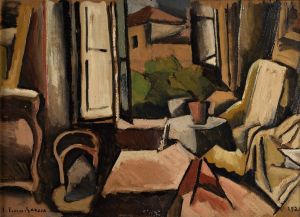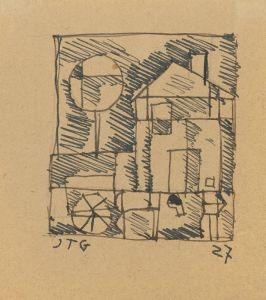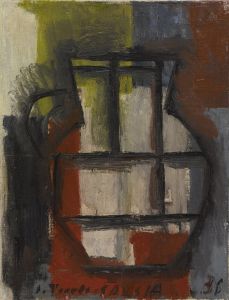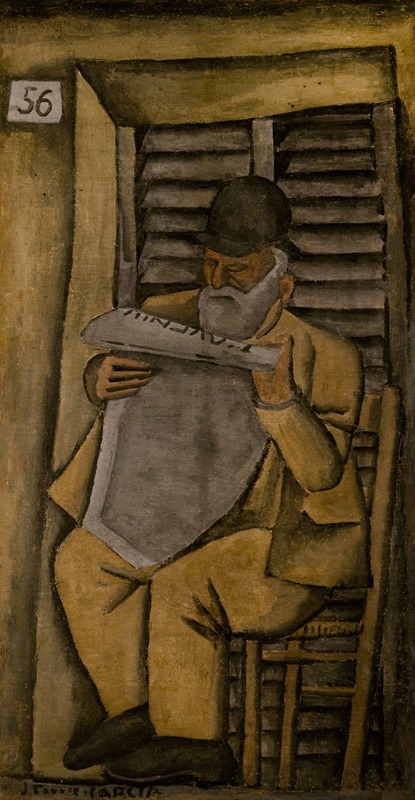
Figura de hombre
A hand-painted replica of Joaquín Torres-García’s masterpiece Figura de hombre, meticulously crafted by professional artists to capture the true essence of the original. Each piece is created with museum-quality canvas and rare mineral pigments, carefully painted by experienced artists with delicate brushstrokes and rich, layered colors to perfectly recreate the texture of the original artwork. Unlike machine-printed reproductions, this hand-painted version brings the painting to life, infused with the artist’s emotions and skill in every stroke. Whether for personal collection or home decoration, it instantly elevates the artistic atmosphere of any space.
Joaquín Torres-García was a prominent Uruguayan artist known for his contributions to modern art and his role in the development of Constructivism in Latin America. One of his notable works is "Figura de hombre," which exemplifies his unique style that blends elements of abstraction with symbolic representation.
"Figura de hombre" is a painting that reflects Torres-García's interest in universal symbols and his commitment to creating a visual language that transcends cultural boundaries. The painting features a human figure, which is a recurring motif in his work, depicted in a stylized and abstract manner. The figure is often composed of geometric shapes and lines, reflecting the influence of Constructivism and Torres-García's belief in the harmony of form and structure.
Torres-García's approach to art was deeply influenced by his time in Europe, where he was exposed to various avant-garde movements. He spent significant periods in Spain, Italy, and France, where he interacted with artists such as Pablo Picasso and Piet Mondrian. These interactions helped shape his artistic philosophy, which he later termed "Universal Constructivism." This philosophy sought to integrate the spiritual and the material, the ancient and the modern, into a cohesive artistic expression.
In "Figura de hombre," Torres-García employs a grid-like structure, a hallmark of his Constructivist approach. This structure not only organizes the composition but also imbues it with a sense of order and balance. The use of earthy tones and muted colors is characteristic of his palette, which often draws inspiration from pre-Columbian art and indigenous cultures of the Americas. This connection to ancient art forms is a testament to his desire to create a universal art that bridges the past and the present.
The symbolic elements in "Figura de hombre" are open to interpretation, but they often include references to the human condition, spirituality, and the interconnectedness of all things. Torres-García believed that art should communicate universal truths and that symbols were a powerful means of achieving this communication. His use of archetypal imagery, such as the human figure, underscores his commitment to exploring themes that resonate across different cultures and epochs.
"Figura de hombre" is not just a representation of a human figure; it is an exploration of identity and existence. Through his abstract and symbolic language, Torres-García invites viewers to contemplate the essence of humanity and its place within the cosmos. His work challenges conventional perceptions of art by emphasizing the importance of structure, symbolism, and the synthesis of diverse influences.
Joaquín Torres-García's legacy is significant in the context of Latin American art, as he played a crucial role in introducing modernist ideas to the region. His work, including "Figura de hombre," continues to be celebrated for its innovative approach and its ability to convey profound philosophical concepts through visual means. As a pioneer of Constructivism in the Americas, Torres-García's influence extends beyond his own creations, inspiring generations of artists to explore the possibilities of abstraction and symbolism in their work.





